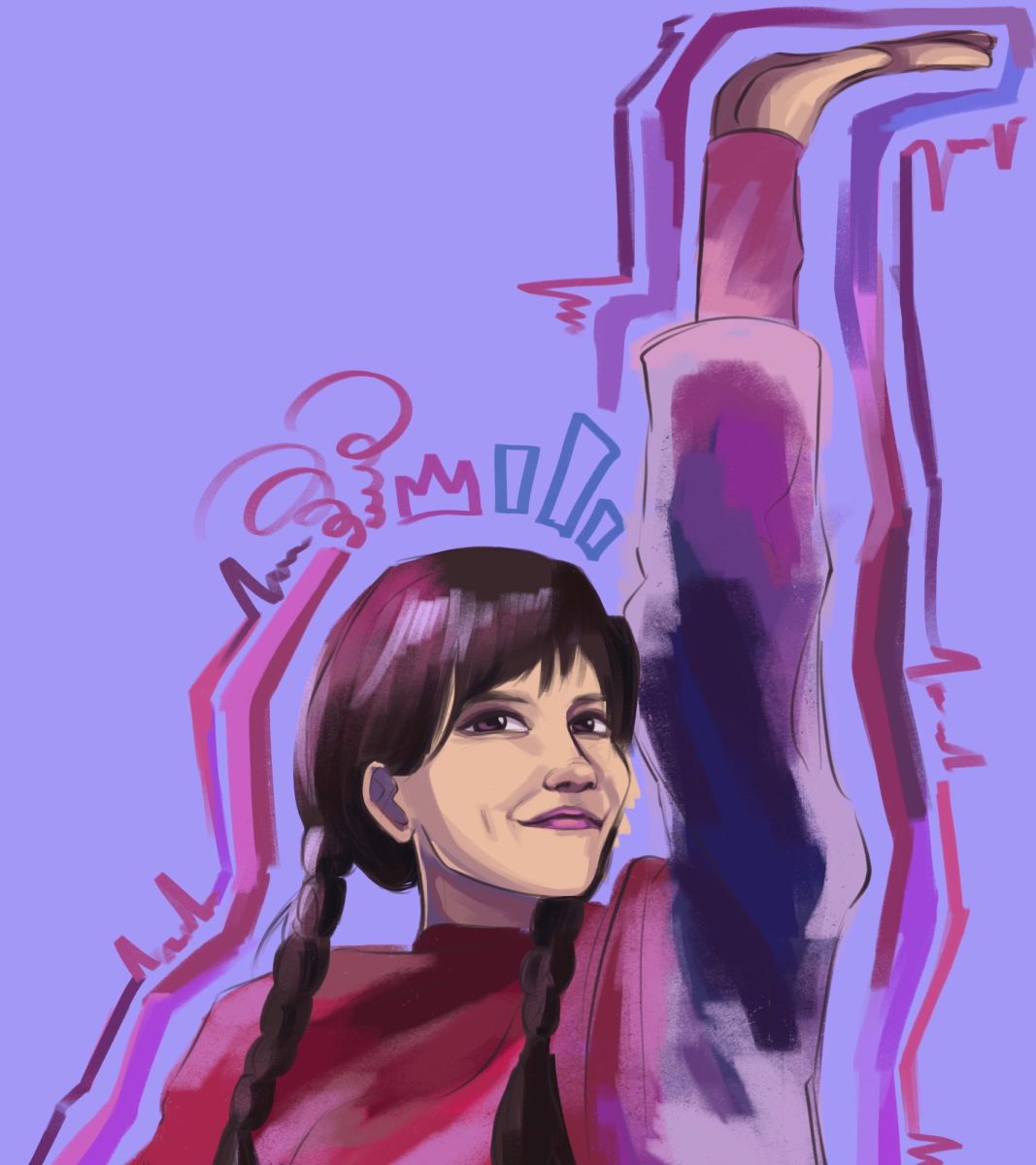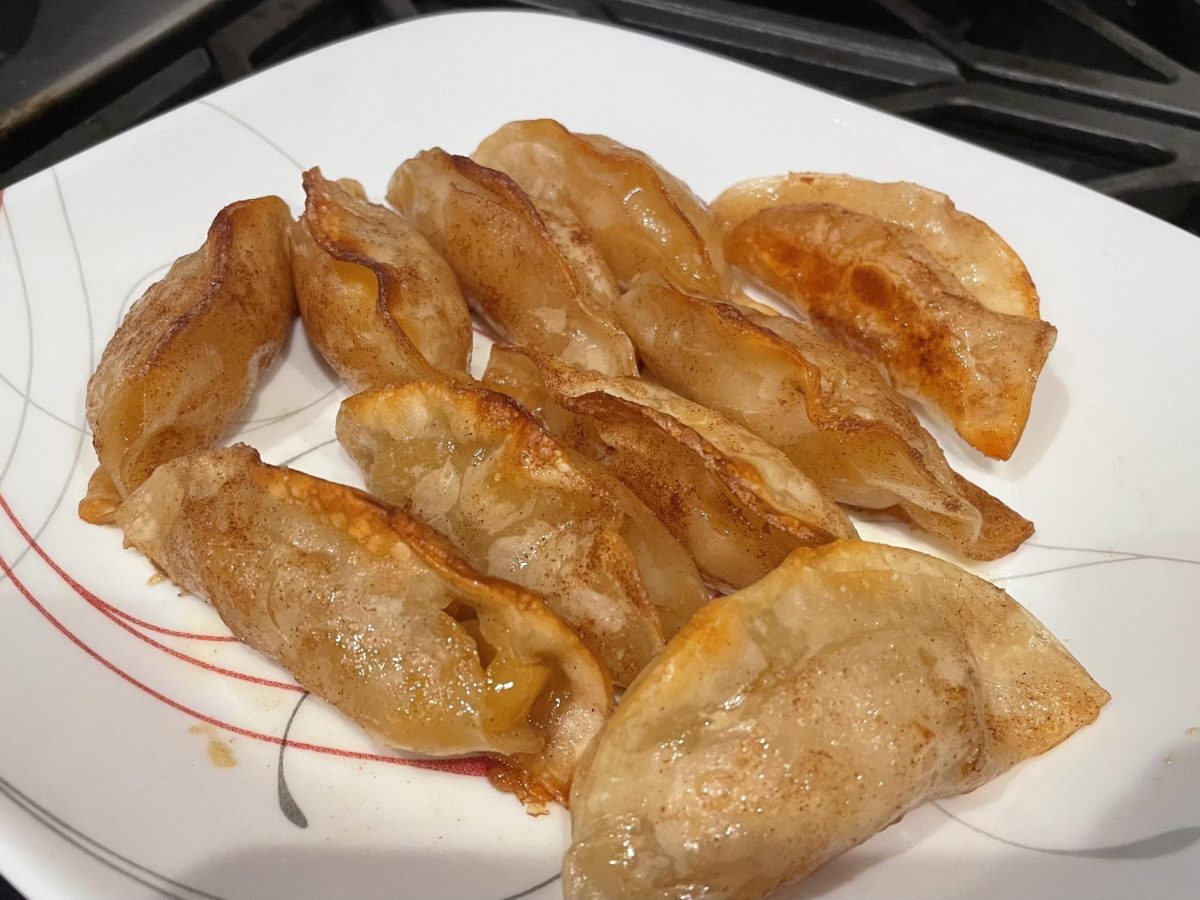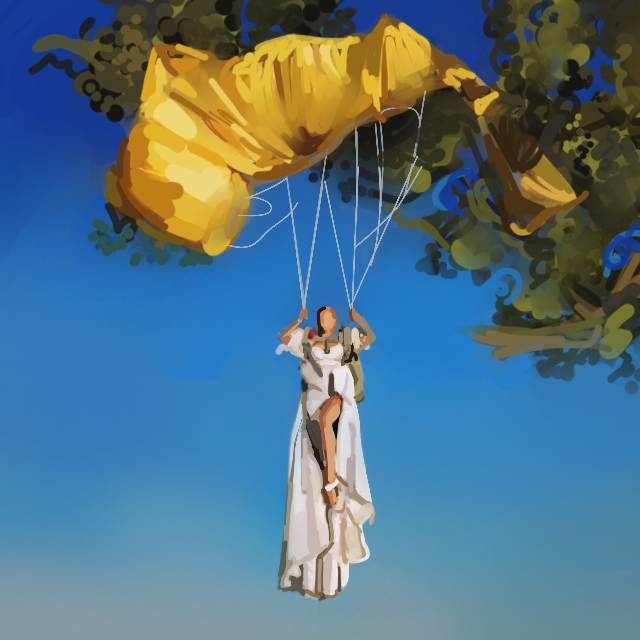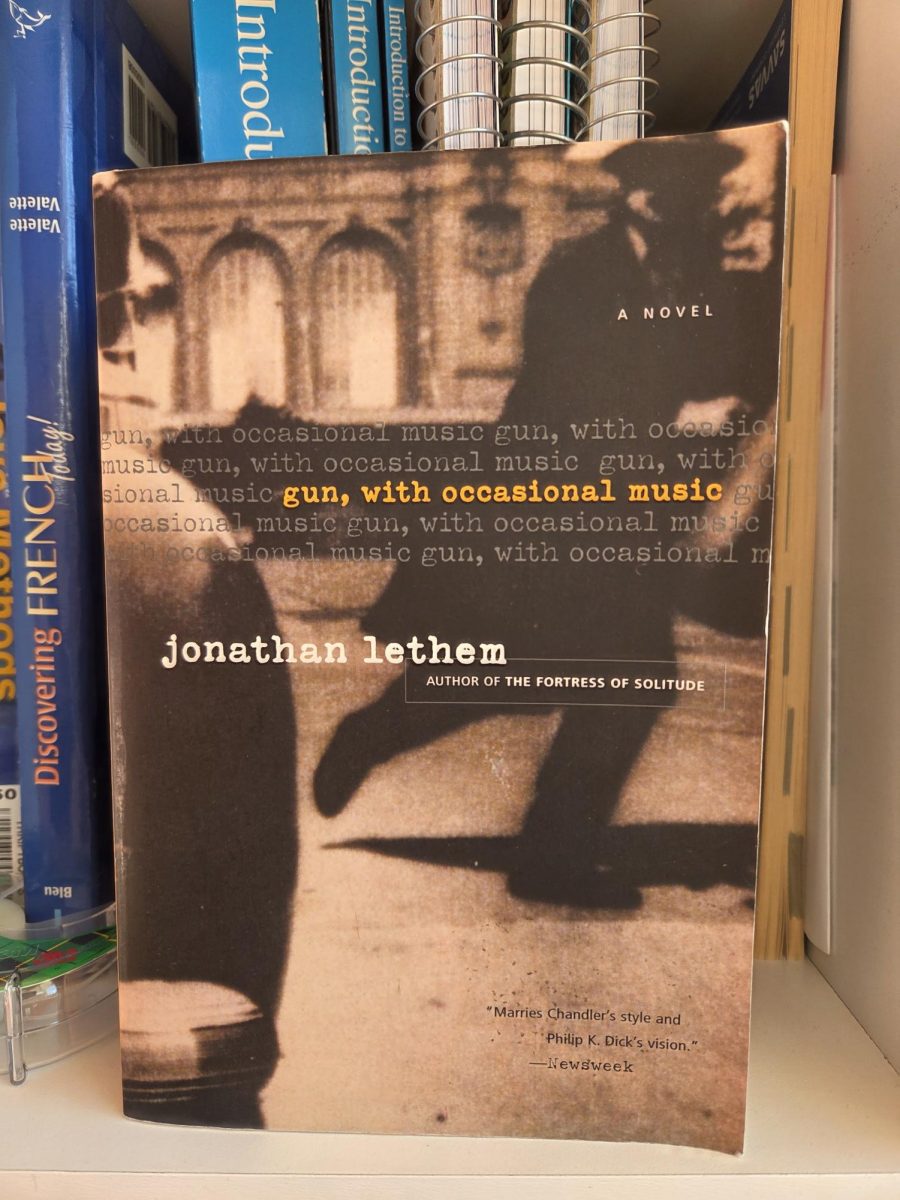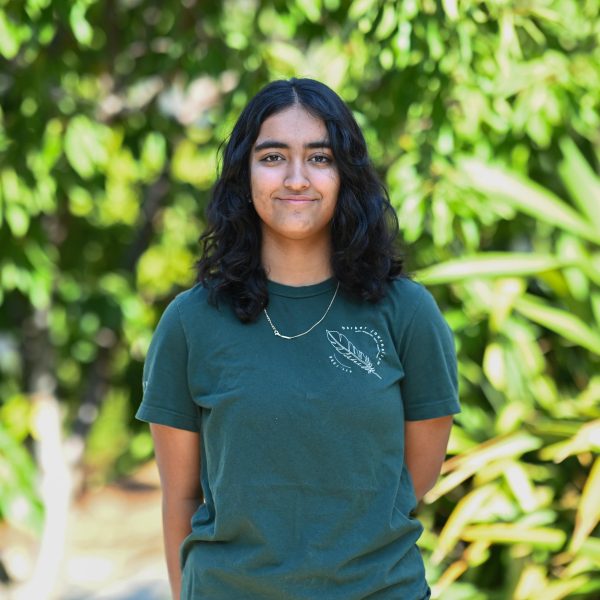When “Wednesday” season 1 came out three years ago, I fell in love with it immediately — it was love at first fright. The storyline of Wednesday, a teenager navigating her social life while solving a mystery, immediately captured my attention, and I loved the plot twists and pacing of the show. When I heard that season 2 was coming out, I was thrilled, especially after the first season left so many gaps in unfinished storylines to be filled.
Season 2 was split into two parts consisting of four episodes each, with both parts released on Netflix on different dates: Part 1 was released on Aug. 6, and part 2 was released on Sept. 3. This review will have spoilers.
Part 1 jumps right into action with Wednesday tied up by a creepy doll-obsessed serial killer she had been stalking, her face covered in black tears. This scene and others brought back the creepy ambience of the Addams Family that season one lacked, with unsettling and graphic elements that could make even Morticia raise an eyebrow.
I was disappointed that the directors took away Wednesday’s psychic powers that allowed her to see into someone’s memories completely for most of the season. While the reasoning made sense — the directors wanted to push Wednesday’s character development by forcing her to realize she can’t handle everything on her own — it felt a little underwhelming. The opening scene focused on the black tears that emanated from her fading powers, making her look even more frightening. However, by episode 2, she had lost her powers entirely, and we never saw those tears again.
Regardless, this plotline did bring back one of my favorite characters from season 1. Weems, shapeshifter and principal of Nevermore, had died during the first season, but her return as a ghost and her sassiness made the season so much more fun to watch; Her comeback gave Nevermore’s school spirit a boost. Rendering Wednesday’s powers useless also gave the writers a chance to explore Wednesday and Morticia’s strained mother-daughter relationship more. While Morticia tried to keep Wednesday from gaining back her powers for her own safety, as continuously using them could have driven her mad, Wednesday resisted her at every step, and their tension built off of season one could have powered the whole Addams mansion without even a séance.
The character building and acting in this season were phenomenal. I enjoyed the introduction of Wednesday’s super-fan Agnes, a thirteen-year-old student who could turn invisible, and the main villain revealed in part 2. At first, I found Agnes annoying, as she continuously tried to one-up Enid to become Wednesday’s best friend, but her eerie, doll-like nature slowly made her grow on me. Even though she was invisible, her obsession with Wednesday was hard to miss, and she added a much needed comedic element to the show. Tim Burton’s short animation of the villain’s backstory was exceptional. I also loved how Jenna Ortega used body language and dialogue to evoke Wednesday’s care for Enid without facial expressions, and their banter in this season rivaled that of season one.
Despite the positives, the villain, whose identity was revealed at the end of part one as a plot twist, had a storyline that ended very abruptly. While her actions were a key element that furthered the plot, she herself only appeared in one episode, and her character seemed underwhelming and almost clichéd. Her arc seemed like an excuse to introduce the main plot of the second part of the season and lacked a substantial and memorable ending.
Since season 2, part 1 ended on a cliffhanger centered around Tyler — Wednesday’s first boyfriend and the villain from season 1 — I went into the show thinking part 2 would be much more focused on him. For a show so obsessed with resurrecting characters (literally), Tyler’s limited screen time was criminal;I had been looking forward to seeing him get a redemption arc after he was manipulated into hurting others in season 1.
While some plot points in part 2 were wrapped up well, others came across as more confusing and less enjoyable than those in part 1. These arcs added unnecessary complications solely to lay the groundwork for season 3. The last few episodes also included many plot twists that seemed out of place and abrupt compared to those in the first 4.
Overall, the season takes a different angle to the Wednesday story, focusing less on the romance of season 1 and more on a frightening ambiance with dark Tim Burton-like characters and tragic plot points. I wish part 2 had been spread out over more, allowing Tyler and Wednesday’s relationship to get more screentime. With how much part 1 seemed to hint at their developments, the second half didn’t deliver, focusing instead on plots that weren’t even touched in the first few episodes. Season 2, as a whole, however, is compelling and dramatic, and almost rivals season 1, but much like Thing and Professor Orloff, the appendages never attached to the whole.
Rating: 3.5/5


















![“[Building nerf blasters] became this outlet of creativity for me that hasn't been matched by anything else. The process [of] making a build complete to your desire is such a painstakingly difficult process, but I've had to learn from [the skills needed from] soldering to proper painting. There's so many different options for everything, if you think about it, it exists. The best part is [that] if it doesn't exist, you can build it yourself," Ishaan Parate said.](https://harkeraquila.com/wp-content/uploads/2022/08/DSC_8149-900x604.jpg)




![“When I came into high school, I was ready to be a follower. But DECA was a game changer for me. It helped me overcome my fear of public speaking, and it's played such a major role in who I've become today. To be able to successfully lead a chapter of 150 students, an officer team and be one of the upperclassmen I once really admired is something I'm [really] proud of,” Anvitha Tummala ('21) said.](https://harkeraquila.com/wp-content/uploads/2021/07/Screen-Shot-2021-07-25-at-9.50.05-AM-900x594.png)







![“I think getting up in the morning and having a sense of purpose [is exciting]. I think without a certain amount of drive, life is kind of obsolete and mundane, and I think having that every single day is what makes each day unique and kind of makes life exciting,” Neymika Jain (12) said.](https://harkeraquila.com/wp-content/uploads/2017/06/Screen-Shot-2017-06-03-at-4.54.16-PM.png)








![“My slogan is ‘slow feet, don’t eat, and I’m hungry.’ You need to run fast to get where you are–you aren't going to get those championships if you aren't fast,” Angel Cervantes (12) said. “I want to do well in school on my tests and in track and win championships for my team. I live by that, [and] I can do that anywhere: in the classroom or on the field.”](https://harkeraquila.com/wp-content/uploads/2018/06/DSC5146-900x601.jpg)
![“[Volleyball has] taught me how to fall correctly, and another thing it taught is that you don’t have to be the best at something to be good at it. If you just hit the ball in a smart way, then it still scores points and you’re good at it. You could be a background player and still make a much bigger impact on the team than you would think,” Anya Gert (’20) said.](https://harkeraquila.com/wp-content/uploads/2020/06/AnnaGert_JinTuan_HoHPhotoEdited-600x900.jpeg)

![“I'm not nearly there yet, but [my confidence has] definitely been getting better since I was pretty shy and timid coming into Harker my freshman year. I know that there's a lot of people that are really confident in what they do, and I really admire them. Everyone's so driven and that has really pushed me to kind of try to find my own place in high school and be more confident,” Alyssa Huang (’20) said.](https://harkeraquila.com/wp-content/uploads/2020/06/AlyssaHuang_EmilyChen_HoHPhoto-900x749.jpeg)



